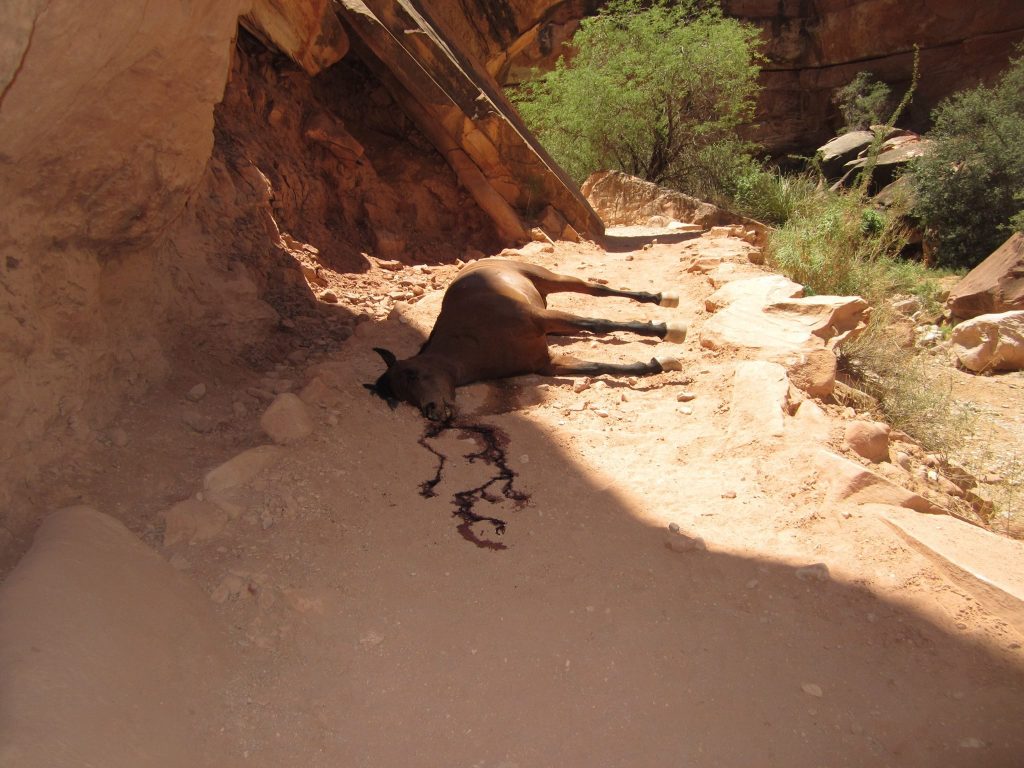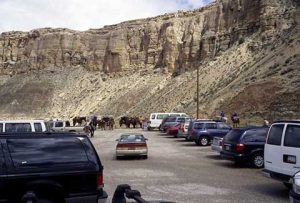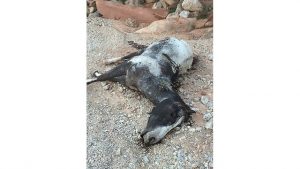**WARNING: GRAPHIC MATERIAL ATTACHED**
Another eyewitness account:
We went to Havasupai in July 2014. On the hike in (7/11/2014, an extremely hot day), we came across a hoof and ankle bone (see photo). A bit later, we saw a horse that seemed to be in bad shape. She was lying on her side in the blazing sun (even though there was shade not that far away). She would go to stand up but then flop back onto her side. She did this several times. This was right near the trail and in clear view of anyone going by. At that time, we knew very little about the animal abuse in Havasupai, and we have no personal experience with how horses behave, but we were suspicious so we documented what we saw (see photo).
When we hiked out two days later (7/13/2014, also an incredibly hot day), we encountered what we are pretty sure was the same horse: Female, with the same markings, very close to where we had seen her the first time. She was dead and grotesquely bloated, with dried blood running from her mouth and nose to form a congealed little stream and puddle (see photo). The poor animal had died right on the main trail (we had to walk, gagging, around her), which means that various people involved with the tribe (passing through leading trains of horses) must have seen her dying or dead over the course of three days, and done nothing to help.
While the corpse was definitely the worse thing saw, we were deeply upset by the condition of the animals in the village as well. All of them were emaciated, many of them were tied to posts in the sun on short tethers with no access to water, and almost none of the enclosures had any shady spots. It’s two years later now and still I literally cannot talk about what I saw there without crying.
**************************
In 2011 the tribal council passed an animal control ordinance which was established to ensure that the condition of the horses used for packing meet a certain standard. If this was implemented in 2011, how did the account above happen in 2014? Why in April of 2016 were four pack horses seized from Leland Joe and their condition and treatment said to be, under oath, “the worst” animal abuse case Lt. Randy Servis with the Arizona Department of Agriculture, had ever seen? How, under such “ordinance”, does this happen?
According to a statement by the tribe’s PR person, Abbie Fink, the tribal council’s discussions about the treatment of the pack animals have taken place “for years”; as far as we know this same conversation continues to date. How long will it take for tribal leadership to put an end to this abuse and stop the violent individuals committing such horrific crimes? Given what we know and the stories – past and present – that we continue to receive, we are reluctant to believe that any type of change has occurred, especially when we are not informed otherwise. We understand that long-term change does not occur over night, but if this is something that the tribe has been talking about for “years”, we can’t understand why the abuse has continued.


